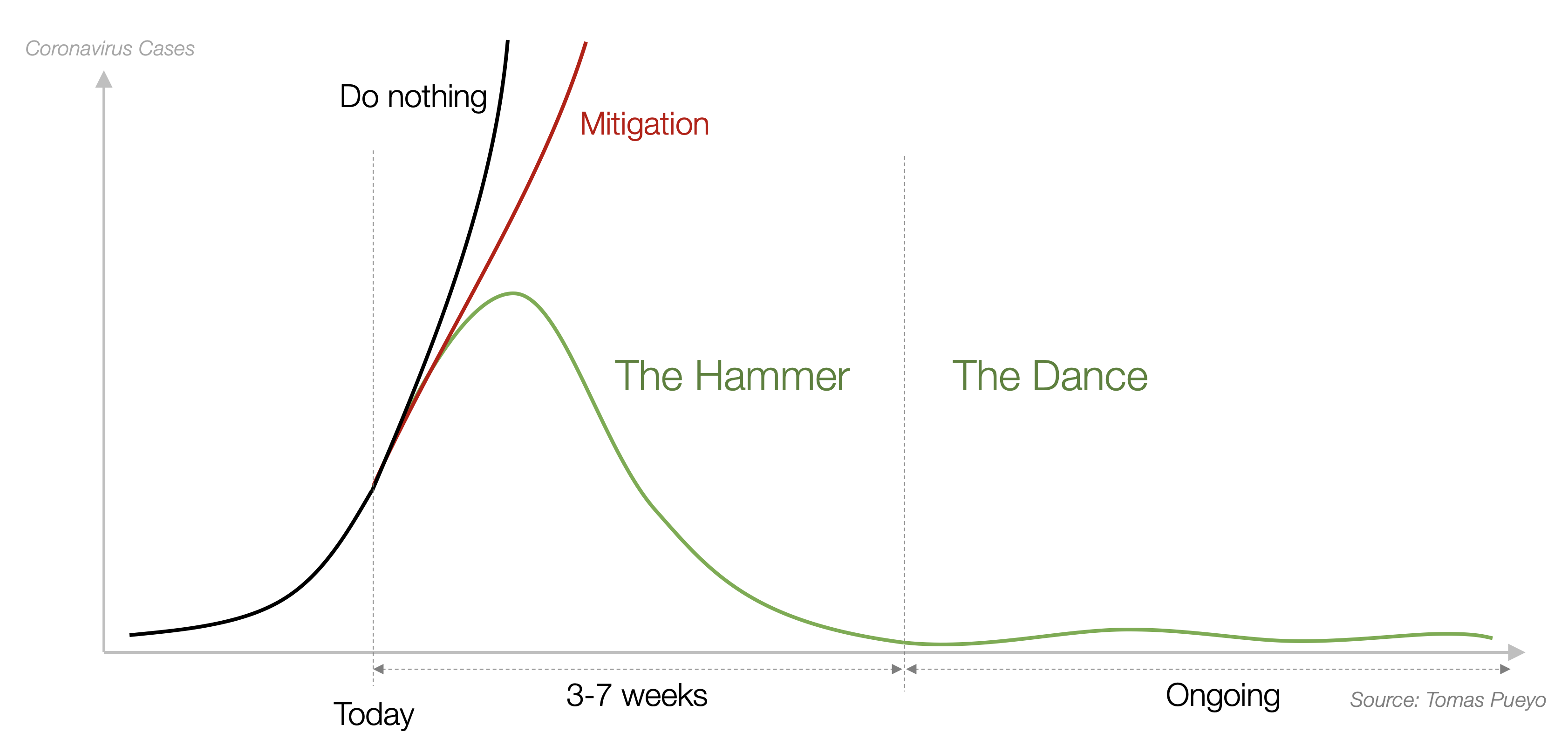Coronavirus links and analysis I find helpful
As a bit of a statistics and numbers geek, I wanted to provide a set of links to the resources I’ve found most helpful in understanding the latest on COVID-19 and where it’s likely headed, in case they are also helpful to others. Some of these give direct access to regularly updated stats and data, and thus I find them particularly valuable. Others give key pieces of analysis, which will go out of date, so I’m separating these.
Tracking resources
One key resource is the Johns Hopkins tracking dashboard, which has case load overlaid on a world map and also has access to all of the underlying data. It’s a nice graphical panel with quite a few statistics overlaid, so it’s helpful to get an at-a-glance view of where things stand now. One news item: For those who didn’t catch it, the rest of the world has now far passed China in cases.
The Hopkins dashboard, however, doesn’t give the plots I find the most helpful. For those, I like these resources better:
- The Financial Times plots: These were behind a paywall until yesterday and only available on Twitter, but now everyone can see them. I find the case trajectory plots (which I unfortunately can’t embed here, but you should look) especially helpful as these provide an easy way to compare growth rate in different countries. If you’re on Twitter, you can follow @jburnmurdoch for updates on this analysis.
- COVID19 dashboards: This is a rather diverse set of plots and analysis using open source tools; in some cases, links to source code are available. Most of this draws on the Hopkins data. Some particularly helpful ones:
- Overview panel
- Case and death growth over time by country
- Case and testing progress by US state – gives a window into how well the states are doing at sorting out true case load (and how many cases they have)
- Growth predictions for the US from an exponential model; good for understanding how soon things could get really bad.
- Locally, the Orange county tracker is good.
Are there other particularly helpful resources I should include here?
Analysis of COVID-19 progress
First, I’ll link to a key UK study from a bit ago and some commentary on it, then I’ll tell you what you should read instead. Short version: Read this Thomas Pueyo article on how we can best get things back to normal – the synopsis of which is to take very extreme measures now to get things into control (shut everything down that we possibly can shut down) and then take longer-term measures to keep things in control. The only alternative(s) to this are terrible.
But, before getting to that article, this key analysis from the Imperial College COVID-19 response team from March 16 provided an analysis indicating how serious things could get and what we could do about them. It was a bit grim; they basically found we’d probably be dealing with this for at least 18 months. Helpful analysis of the article came from:
- Technology Review
- The NY Times
- Harvard faculty on Twitter – see the thread
However, it was followed by Pueyo’s analysis, which helps us see some possibly more positive paths forward.
At a very high and perhaps oversimplified level, the UK study argued that the main way to avoid a very high death rate is simply to slow down the epidemic to extend over a rather long time, spreading out the case burden until we’re able to develop a vaccine – perhaps 18 months or so. But because people and the economy were unlikely to tolerate extreme social distancing for that long, they explored ideas involving periodic rounds of social distancing, with monitoring as restrictions are loosened to know when it’s necessary again.

Pueyo’s article, which is worth reading in full when you can spare a chunk of time, argues for a different strategy: An initial phase of extreme lockdown to get the epidemic in control and determine which measures are most effective, then a release of restrictions broad enough to bring back some kind of normality while still restrictive enough to keep the epidemic in control. That will require learning a lot in the interim – so the initial restrictive phase partly needs to buy us time to learn what we need to manage this. A sample plot from his analysis is given above.
I’m told there’s a petition on the White House site urging leadership to consider a strategy like that proposed by Pueyo, but I haven’t found it yet.
UPDATE: Former FDA commissioner Scott Gottlieb has a really nice Twitter thread on this – there’s no return to normal until we end the epidemic.)
Other posts in my coronavirus series:
- A couple thoughts/trust God (post 1)
- Take it very seriously (post 2)
- A couple more thoughts/concerns about schools (post 3)
- Tell your friends to take action (post 4)
- Staying connected while practicing social distancing (post 5)
- Worshipping together while apart (post 6 – on church worship when separated)
- An assortment of things about COVID-19 (post 8 – with some resources, personal thoughts, and links to analysis)